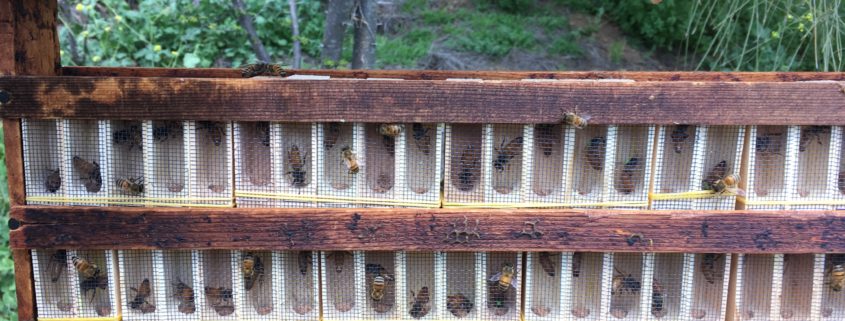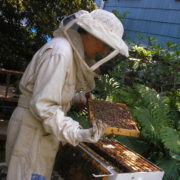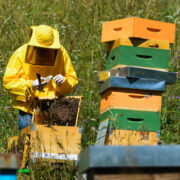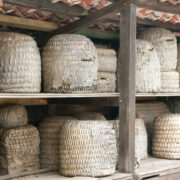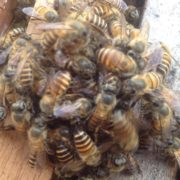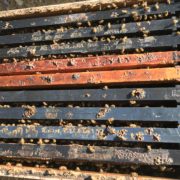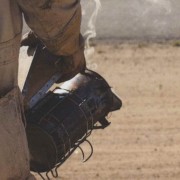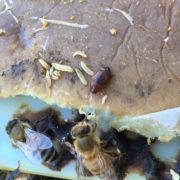How To Bank Queens
When you have more queens on hand than you know what to do with, then it’s probably time to think about banking them. Banking queens is a way to keep queens healthy over the long-term before they are placed inside their actual colonies. Although at Wildflower Meadows we typically sell our queens quickly after pulling them, we still nevertheless need to maintain queen banks throughout the season. As in any queen rearing operation, there are always queen bees coming and going. When a Wildflower Meadows’ queen is standing by for shipment, she sometimes needs a comfortable ‘bed and breakfast’ to temporarily be housed safely and professionally. Afterall, she is royalty!
Whether you are banking a hundred or more queens at a time, or just one or two, the principals of successful queen banking are always the same. The key to your success, and by far the most important component of your banking system, is that you maintain a strong, healthy banking colony that is both well-fed and queenless throughout the period of banking.
Traditional beekeeping advice often says that you can bank queens in a colony that has its own queen as long as you keep the queen bank over a queen excluder. However, at Wildflower Meadows, we do not subscribe to this view. This approach often results in worker bees attacking the banked queens, which can unnecessarily cause stress or losses to the queens in the bank. We have found that it is best that the banking colony has no queen of its own, as this makes it very receptive towards caring for and properly attending to the banked queens.
Your banking colony should always be well fed. At Wildflower Meadows we never stop feeding our banking colonies. The syrup flows from March through September and it never stops. This ensures that the attending bees inside of the banks always have more than enough resources to take excellent care of the queens. If you are banking queens for more than a week or two, you also will need to maintain your queen bank by removing any natural queen cells inside the bank, and by continually adding brood. You always want a good supply of young nurse bees on hand in your bank, because these are the bees that focus on taking care of your precious queens. When you are banking queens, nurse bees are your friends. If you don’t keep adding brood, you will quickly run out of nurse bees, and your queens will suffer the consequences.
Once your banking colony is well fed, strong and queenless, it is ready to receive the banked queens. You will want to have some system for storing the queens inside the colony. The first thing is to make sure that the banked bees have no access to releasing the queens! If you are banking just a few queens, the easiest approach is to place a piece of heavy-duty tape around the bottom of the cage, blocking any access to the candy or cork.
There are different methods for placing the queens inside of the banking colony. At Wildflower Meadows, we use what is known as a “banking frame,” which is a specialized beekeeping frame that is designed to hold 132 queens at a time. This frame takes up the space of two normal Langstroth frames inside a deep hive body.
You don’t necessarily need a banking frame, however, to successfully bank queens. If you are banking for a relatively short amount of time and don’t mind cleaning up a little extra burr comb, you can simply remove two frames from your banking colony, and creatively place your queens inside the gap you’ve created, making sure to leave enough space for the bees to attend to the queens. If you have wooden cages, you could assemble “groups” of ten queens or so with a rubber band, and stack them inside the gap. Always keep in mind that your nurse bees need to have easy access to the queens. If possible, you should also place the queens towards the center of the colony, well below the lid, as excessive heat may cause damage.
Best practices call for banking queens without any attendants inside the cages. Theoretically, this is to keep the bees in the bank focused on the queens directly rather than on the attendants in the cages, which may have different pheromones and repel or fight with the banking colony. In our experience, however, this is rarely the case. Usually, the attendants inside of the cages combine forces in a friendly manner with the attendants in the bank and work together harmoniously to take care of the queens. Nevertheless, to be safe, especially when banking over the long term, it is always better to bank queens without attendants inside the individual cages.

